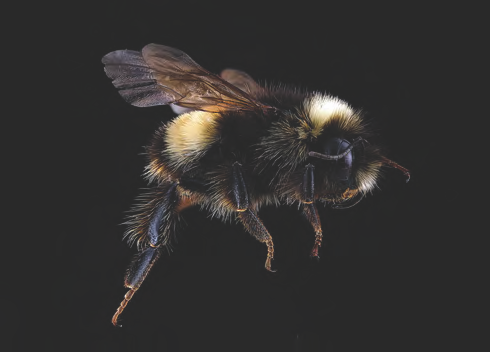Where Have All the Insects Gone?
Published Jun 1st, 2019 by Lynnwood Andrews and Mary Sellman

Michael McCarthy in his book Moth Snowstorm remembers evening drives when moths filled the headlights like snowflakes in a blizzard. Memories of summer always include sounds of insect life, children happily chasing butterflies and catching lightening bugs.
Insects have undergone a severe, largely unnoticed decline over at least three decades. Scientists have now documented the decline and studied its causes. A 2017 study in Germany, revealed a shocking 76% decline in insect biomass in nature preserves. Fewer insects are present, and their ranges are restricted. A review study published this month in Biological Conservation reports that 40% of insect species worldwide are threatened with extinction. Butterflies (Lepidoptera), wasps and bees (Hymenoptera), and dung beetles (Coleoptera) are most affected. The reasons for the decline include habitat loss to intensive agriculture and urbanization, pesticides, fungicides and fertilizers; invasive species; and climate change. A few common and generalist species are increasing in number, occupying vacant ecological niches, but they are unlikely to be adequate substitutes.
Three broad categories of insects – decomposers, carnivores, and herbivores – support life on earth. Decomposers feed on dead or rotten plants, animals, and excrement clearing waste, recycling nutrients, and building humus. Carnivores prey on or parasitize other animals. We rely on insect carnivores for integrated pest management. Herbivores include pollinators and leaf-eating insects. Pollinators are necessary for plant regeneration, including many foods we eat. Leaf-eating insects and the insects that prey on them are essential diets for a wide range of birds, mammals, reptiles, and amphibians. Indeed, our nesting birds feed leaf-eating insects to their young in spring when no seeds are available. In addition to documented decreases in animal life because of fewer insects, scientists anticipate further cascading effects on animal populations. A mass extinction of insects will result in a mass extinction of animals and affect human populations, too.
What can we do to stop the insect decline? We can increase insect habitat by:
- Planting native species. While some generalist pollinators will visit non-native plants, leaf-eating insects and specialist pollinators rely often exclusively on plants they evolved with. Without those native plants, they starve. Plant many different species in a succession of bloom times from early spring to late fall. Think shrubs and trees, not just flowers. Find some of the best native plants by visiting Doug Tallamy’s website Bringing Nature Home or the Lady Bird Johnson Wildflower Center. Look for our insect display coming soon to the Norwich Post Office.
- Do not spray with herbicides, fungicides, or pesticides, especially neonicotinoids, which are highly toxic to bees. Use the Xerces Society website to print out the names of neonicotinoids so you can avoid them. Insist on plants and seeds that are neonicotinoid-free. Use horticultural oils if you have to spray.
- Leave bare ground. Many native solitary bees are ground-nesting and require bare soil. These are not yellow jackets. They do not sting.
- Reduce your lawn and increase edge habitat. Raise your lawn mower as high as possible, mow infrequently, and leave clippings on the lawn. Leave as much ‘natural’ edge as possible.
- Reduce deer overbrowse by using repellents such as Liquid Fence, fencing, or support measures to reduce local deer populations to sustainable levels.
- Support agricultural practices that benefit insects. Buy organic as much as possible. Buy from farms that use regenerative and pollinator-friendly farming practices.
- Remove invasive species and avoid planting non-natives as much as possible.
- Adopt practices and support policies and procedures that reduce climate change and pollution. Although insects in New England are somewhat less susceptible to climate change than those in the tropics, they are under stress from many sources. Pollution from sewer plants and farming have serious effects on insects, especially aquatic insects.
- Participate in citizen science projects involving insects. Vermont Center for Ecostudies is starting a bumblebee surveying project that should include our area by 2020. You can contribute to iNaturalist Vermont and eButterfly. Details are at the Vermont Center for Ecostudies website.
Originally published in Summer 2019 Norwich Times